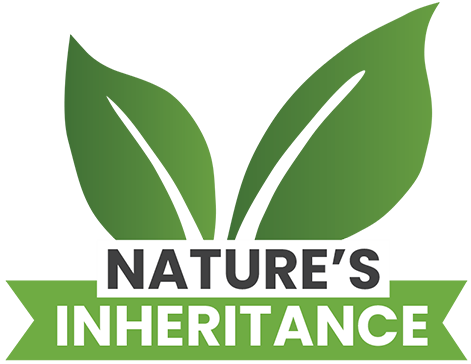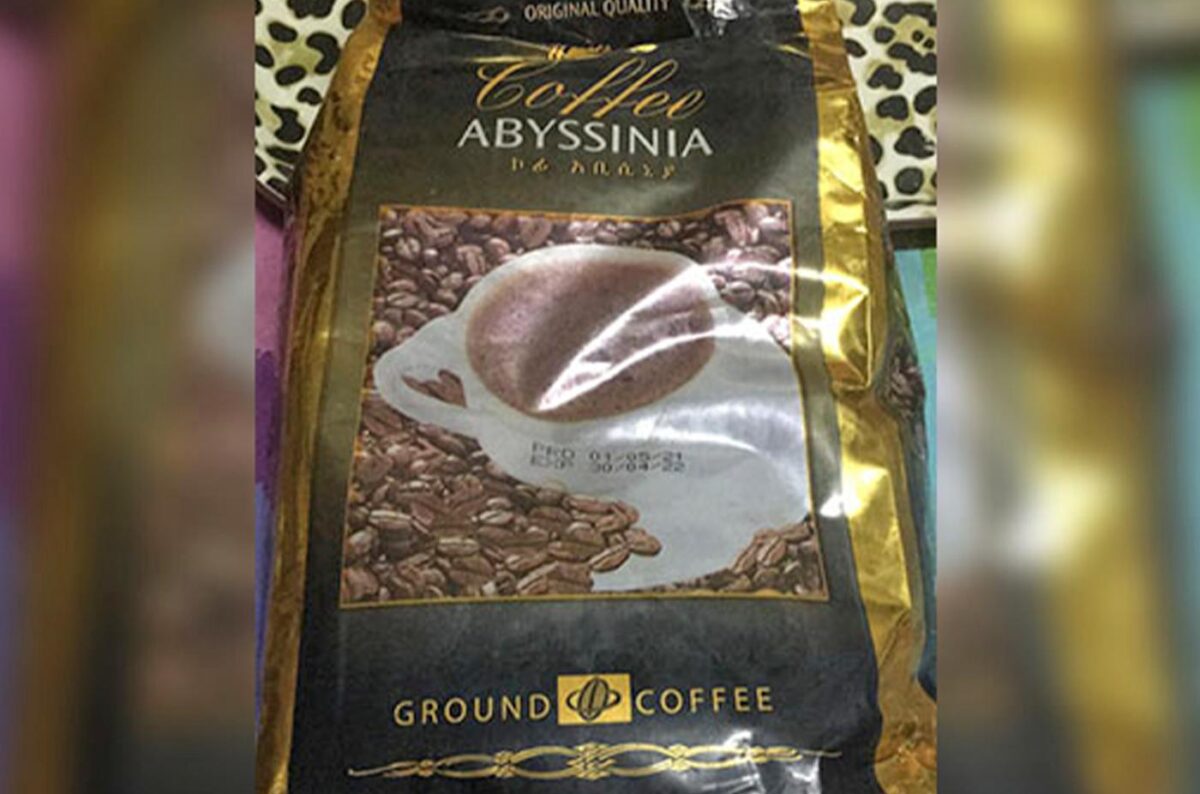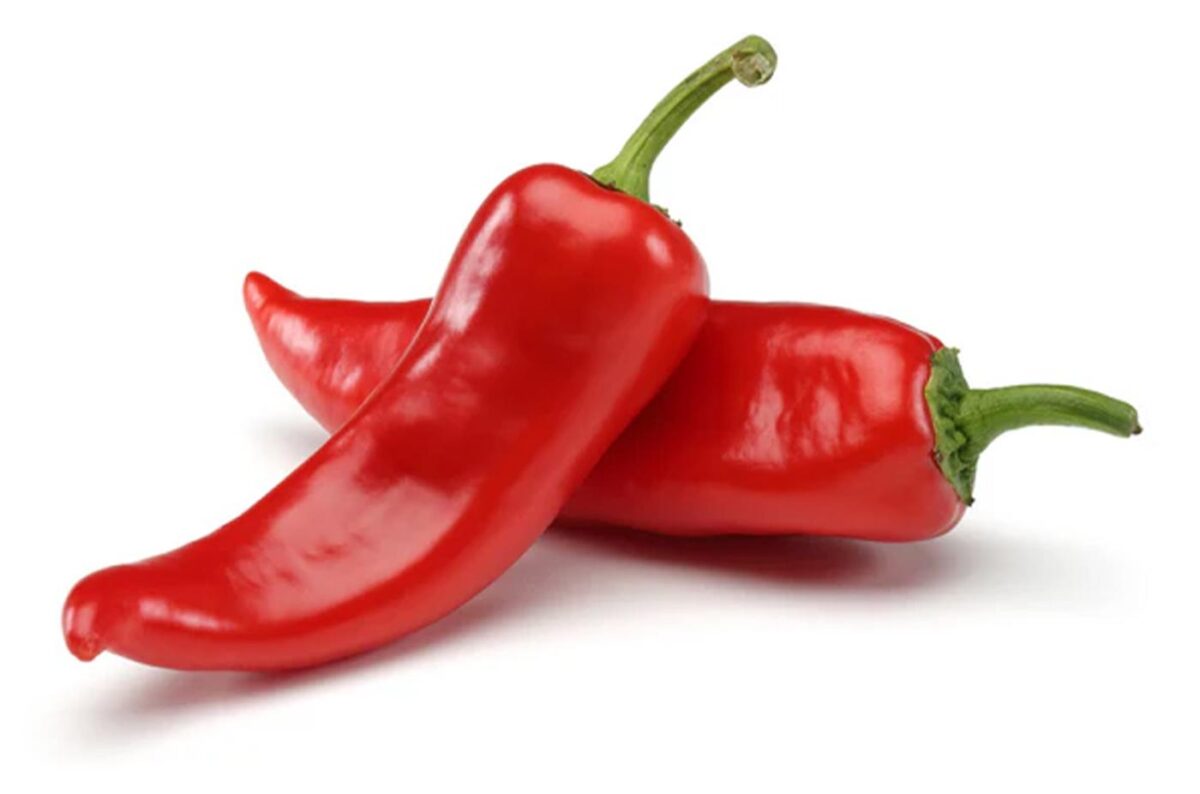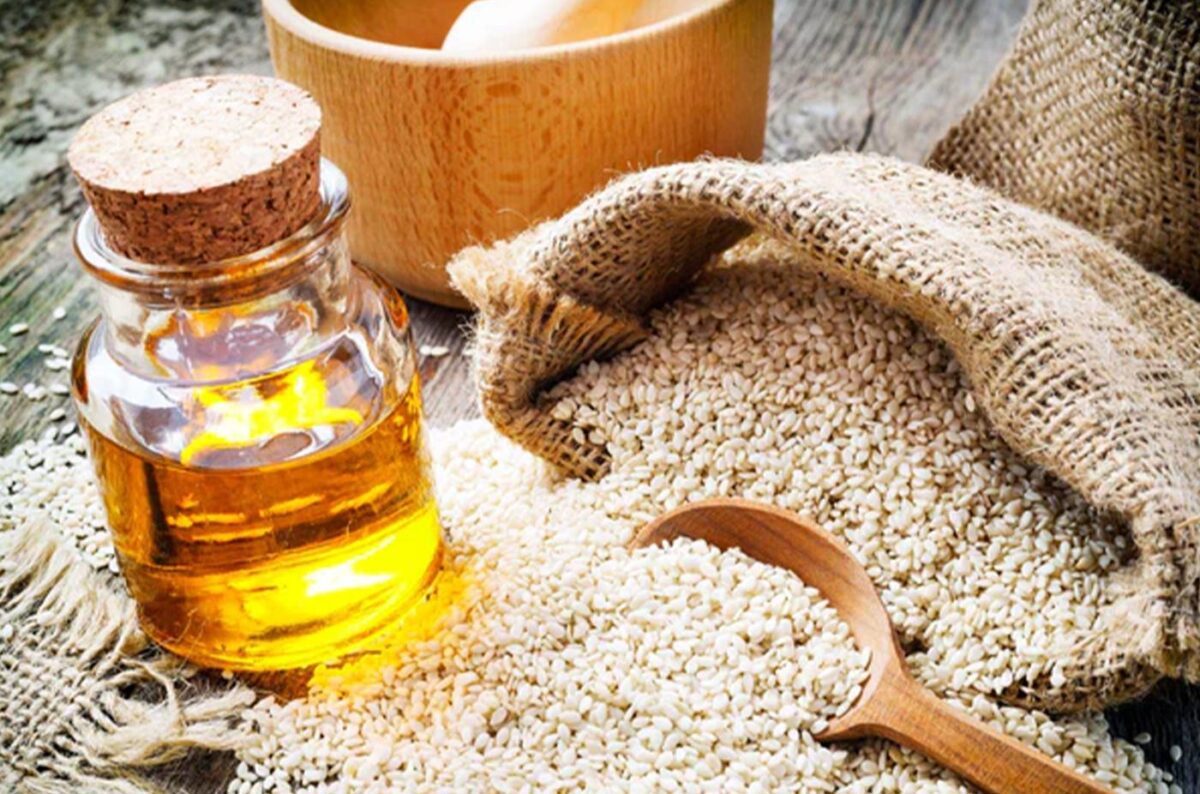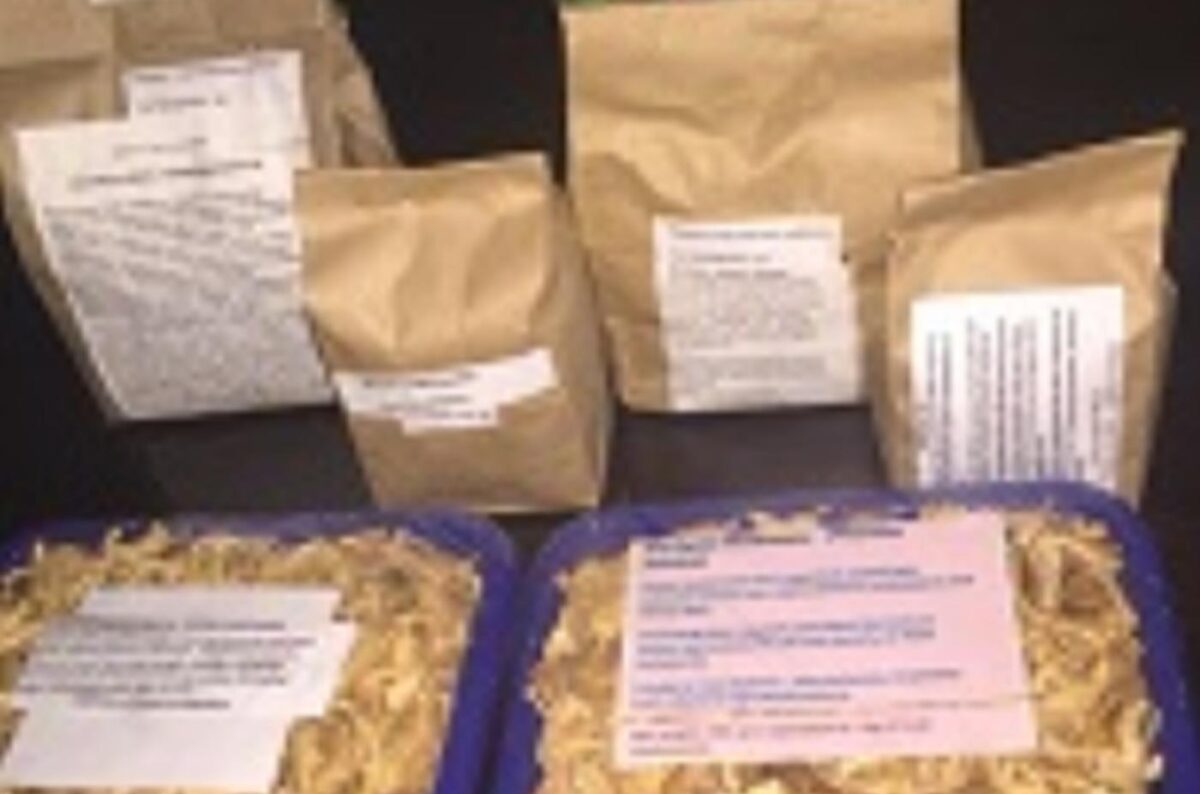

Description of Moringa Oleifera and general characteristics
Moringa oleifera is the scientific name for the most well-known variety of moringa trees, of the family Moringaceae. It is a very -fast-growing, drought resistant, small size leafy tree with approximately 5 to 10 m height, native to the sub-Himalayan areas of India, Pakistan, Bangladesh, and Afghanistan that produces flowers or pods, now found throughout the tropics due to its multiple utilities. There are at least a dozen different varieties of the moringa tree, but moringa oleifera is by far the most utilized.
Moringa oleifera has several local names, but due to its healing power and lifesaving quality, it’s often referred to as the “Miracle Tree”.
Other names moringa oleifera is known by are: “drumstick tree,” or “horseradish tree,” Arango, Árbol de las Perlas, Behen, Ben Ailé, Ben Nut Tree, Ben Oléifère, Benzolive, Canéficier de l’Inde, Chinto Borrego, Clarifier Tree, Drumstick Tree, Indian Horseradish, Jacinto, Kelor Tree, Malunggay, Marango, Mlon.
Its name derives from the Tamil and Telegu words munakkai/murungai/muringa, which mean “Never Die” due to its noteworthy features.
Some Unique characteristics of Moring Oleifera
The National Institute of Health called moringa (moringa oleifera) the “plant of the year,” in 2008, stating that “perhaps like no other single species, this plant has the potential to help reverse multiple major environmental problems and provide for many unmet human needs.”
The moringa tree has the remarkable capacity of growing in poor, nutrient-depleted soils where other useful plants cannot survive. In Somalia, India and other African countries, certain undernourished populations have greatly benefited from this peculiar trait of moringa oleifera during times of severe drought and famine. Even in the driest season moringa stays internally hydrated and succeeds in retaining its electrolyte balance.
Moringa oleifera is currently successfully used in reforestation projects, to help restore fertility to the soil, as well as to filter water and, last but not least, to provide an array of important nutrients to the human population.
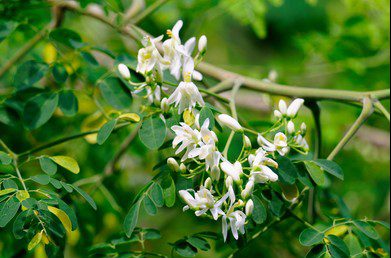

Moringa as an aid in the fight against malnutrition
This is one plant food that displays not just one or two but numerouspotential healing powers. Being a good source of protein vitamins, minerals and essential fatty acids, moringa oleifera is thought to be a helpful supplement for people who are malnourished. It has been used by health authorities around the world, particularly in developing countries, to help combat symptoms of malnutrition and aging for several decades. Moringa is used in India and Africa in feeding programs to fight malnutrition.
The fact that moringa grows rapidly and easily makes it especially appealing for impoverished areas, and it’s been used successfully for boosting nutritional intake in Malawi, Senegal, and India. In these areas, moringa may be the most nutritious food locally available, and it can be harvested year-round.
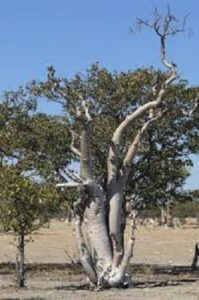
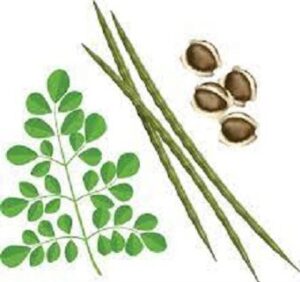
Traditional Uses of the Various Parts of the Plant
So far, scientists have only investigated a fraction of the many reputed benefits of this plant, yet enough to confirm a good deal of the wide variety of nutritional and medicinal properties attributed to this plant since time immemorial.
This tree has been traditionally revered for centuries in ancient cultures in various parts of the world, who have long used Moringa in their herbal medicine repertoire for ailments ranging from gout to various inflammations and fevers
Moringa oleifera has been used extensively in traditional medicine practices and has been praised for its health benefits for more than 4,000 years.
The uses of moringa are well documented in both the Ayurvedic and Unani systems of traditional medicine, among the most ancient healing systems in the world. The Ayurvedic system of medicine associates it with the cure or prevention of about 300 diseases. Among them, to help heal bone fractures and encourage bone growth in children; its contents of calcium and other nutrients could potentially increase bone mass to prevent osteoporosis.
Furthermore, Ayurvedic medicine uses Moringa as a natural antibiotic, an aid in childbirth, for treating liver disorders, as an anti-inflammatory, cholesterol-lowering, and cardioprotective medicine. It has been used to prevent or treat stomach ulcers,kidney damage, fungal or yeast infections as well as digestive complaints. It considers it one of the most valuable and useful plants.
Medicinal and Nutritional Properties of Moringa Oleifera
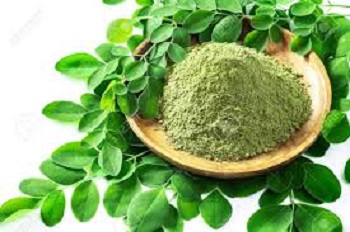
Moringa is a unique plant because almost all parts of it can be used as a source for nutrition and its other medicinal properties that fight free radical damage, including leaves, seed, pods, flowers and fruits which are edible, and roots and bark which are also used for their therapeutic value. Virtually all parts of the plant are used to treat inflammation, infectious disorders, and various problems of the cardiovascular and digestive organs, while improving liver function and enhancing milk flow in nursing mothers.
The most popular medicinal use of moringa, both traditionally and today, involves drying and grinding down the tree’s antioxidant-packed leaves to unlock the most moringa benefits.
Indeed, it is known as a ‘superfood’ due to its health benefits, which are tantalizing.
This is due to its combination of macro and micro nutritional factors. These factors can promote immunity and help prevent the development of different life-threatening disorders including cancer and HIV.
Its huge antioxidant property and the rare combination of phytochemicals in MO give it great value as a folk medicine. The isothiocyanates, flavonoids, and phenolic acids in moringa leaves, pods, and seeds also have anti-inflammatory properties.
Moringa can act as cardiac and circulatory stimulants, possess antitumor, antipyretic, antiepileptic, anti-inflammatory, antiulcer, antispasmodic, diuretic, antihypertensive, cholesterol lowering, antioxidant, antidiabetic, hepatoprotective, antibacterial and antifungal activities, and is being employed for the treatment of different ailments in the indigenous system of medicine.
There is an anti-bacterial and anti-inflammatory effect when leaves are applied to wounds or insect bites; extracts can be used against bacterial or fungal skin complaints; flower juice improves the quality and flow of mothers’ milk when breast feeding, and is useful for urinary problems as it encourages urination. Moringa is sometimes applied directly to the skin as a germ-killer or drying agent (astringent). It is also used topically for treating pockets of infection (abscesses), athlete’s foot, dandruff, gum disease (gingivitis), snakebites, warts, and wounds.
In Haiti, villagers boil Moringa flowers in water and drink the tea as a powerful cold remedy.
Its young seed pods and leaves are likewise consumed as vegetables, fresh or dried. Due to high protein and fiber content the seeds play a useful part in treating malnutrition and diarrhea.
In addition to its well-known anti-inflammatory, cholesterol-lowering, and cardioprotective properties, Moringa appears to have anti-diabetic effects as well, likely due to beneficial plant compounds contained in the leaves, including isothiocyanates. The isothiocyanates, flavonoids, and phenolic acids are present in moringa leaves, pods, and seeds.Particularly noteworthy are its isothiocyanates, which have anti-bacterial properties that may help to rid your body of H. pylori, a bacteria implicated in gastritis, ulcers, and gastric cancer.
The roots and the bark have all of the properties described above but are more concentrated. Therefore much more care should be taken if using them as medicines. They are used for cardiac and circulatory problems, as a tonic and for inflammation. The bark is an appetizer and digestive.
* In Senegal and India, roots are pounded and mixed with salt to make a poultice for treating rheumatism and articulars pains. In Senegal, this poultice is also used to relieve lower back or kidney pain
* The alkaloid spirachin (a nerve paralysant) has been found in the roots.
* The gum is diuretic, astringent and abortifacient and is used against asthma.
Finally, the seed cake remaining after oil extraction is used as a fertilizer and also to purify well water and to remove salt from seawater.
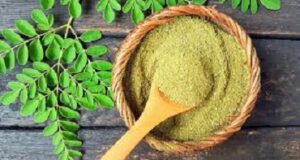
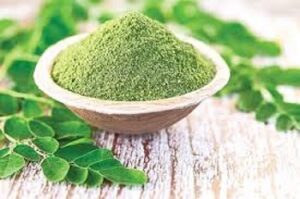
Potential of moringa in disease prevention
Research on animals shows moringa could potentially play a role in disease prevention. There are no known side effects to taking moringa in normal, recommended quantities.
Because it provides a concentrated source of vitamin A, moringa is given to thousands of children in third-world countries every year suffering from life-threatening vitamin A deficiency, which is linked to impaired immune function.
Nutritional Profile of Moringa
Different parts of Moringa contain a profile of important minerals and are a good source of protein, vitamins, beta-carotene, amino acids and various phenolics. Moringa provides a rich and rare combination of zeatin, quercetin, beta-sitosterol, caffeoylquinic acid and kaempferol.
Moringa contains around 20 types of amino-acids, 46 antioxidants, 36 anti-inflammatory compounds and more than 90 nutrients which make it one of the best nutritional supplements. It is an excellent source of minerals like iron, calcium and vitamins A, B, B1, B2, B3, B6, C, E as well as macro minerals, trace minerals and phytonutrients.
Moringa is a great source of protein, which is not only responsible for preserving physiological functioning, but also helps to build different body tissues, including cellular structure, bones and muscles.
Protein is made with a sequence of amino acids. Almost 18-20 amino acids are present in MO that are required for building essential proteinaceous structures. Some 10 -12 amino acids are made by the human body, but another eight essential amino acids must be supplied through a proper diet. Surprisingly, moringa contains all eight essential amino acids, so adding moringa to your diet will avoid a deficiency of these essential amino acids.

Medicinal and Nutritional Value of Moringa Leaves
Moringa Leaf Health Benefits
Moringa leaves are considered the most potent part of the plant, packed with antioxidants and essential nutrients. Here are some of its key health benefits:
- Rich in Vitamins and Minerals: Moringa leaves contain:
- 7x the vitamin C of oranges
- 17x the calcium of milk
- 9x the protein of yogurt
- 10x the vitamin A of carrots
- 15x the potassium of bananas
- More iron than spinach (23% of a child’s daily requirement in 1 tablespoon)
- Other Essential Nutrients: Moringa leaves are a source of:
- B vitamins
- Vitamin D
- Vitamin K
- Essential minerals
Overall, moringa leaves offer a wealth of nutritional benefits and can be a valuable addition to a healthy diet.
It takes roughly seven pounds of moringa leave
Moringa leaf powder is a concentrated and nutrient-rich alternative to fresh moringa leaves. Here are some of its key benefits:
- Higher Nutrient Content: Moringa leaf powder contains 10x more specific nutrients than fresh moringa leaves
- Easy to Use: Soft and fluffy powder easily dissolves in water and can be used in various recipes
- Nutrient-Rich: Rich in:
- Antioxidants
- Protein
- Calcium
- Beta-carotene
- Vitamin C
- Potassium
- Health-Enhancing Compounds: Includes:
- Moringine and moringinine
- Quercetin (antioxidant and blood pressure reducer)
- Chlorogenic acid (sugar absorber and potential weight loss aid)
- Kaempferol and rhamnetin (antioxidants)
- Polyphenols (proven anti-inflammatories)
- Medicinal Properties: Supports heart health, natural circulation, and has antitumor, anti-epileptic, anti-ulcer, antispasmodic, antihypertensive, and antidiabetic effects.
Overall, moringa leaf powder is a convenient and nutritious addition to a healthy diet.
Moringa leaf powder has been shown to increase blood antioxidant levels, particularly when tested in living models. Its antioxidant properties, attributed to high polyphenol content, help protect major biomolecules from oxidative damage.
Key Benefits:
- Reduces fasting blood sugar levels by 13.5% in women who consumed 7g daily for 3 months
- Lowers blood sugar rise by 21% in diabetic patients who added 50g to their meals
- May help reduce high blood pressure, water weight, and cholesterol levels
- Associated with a reduced risk of chronic diseases, including:
- Cancer (stomach, lung, colon)
- Diabetes
- Hypertension
- Age-related eye disorders
- Mood stabilization and brain health support
Potential Mechanisms:
- Induction of cellular transcriptional changes, similar to sulforaphane
- Increased antioxidant levels, which may contribute to its benefits
While the exact mechanisms are not fully understood, the antioxidant properties of moringa leaf powder appear to underlie its various health benefits.
Moringa leaves have been found to possess anti-tumor and anti-cancer activities, attributed to compounds like niaziminin. Preliminary research also suggests:
- Anti-viral activity: effective against the Epstein-Barr virus and Herpes simplex virus
- Regulation of thyroid function: particularly in cases of over-active thyroid
- Anti-bacterial properties: isothiocyanates may help eliminate H. pylori, a bacteria linked to gastritis, ulcers, and gastric cancer
Type 2 Diabetes and Cardiovascular Benefits
- Lowered glucose levels: in rats with Type 2 diabetes, attributed to quercetin and kaempferol
- Improved insulin and protein levels: reduced oxidation and slowed progression of diabetes
- Cardiovascular benefits: regular consumption lowered cholesterol levels and reduced atherosclerotic plaque formation by 50-86%, comparable to simvastatin
Potential Mechanisms:
- Isothiocyanates: anti-bacterial properties against H. pylori
- RBITC: suppresses macrophage activation, may have therapeutic potential for inflammation and immune response
- Quercetin and kaempferol: contribute to glucose regulation and improved insulin sensitivity
These findings suggest that moringa leaf may have therapeutic potential for the prevention of various diseases, including cancer, cardiovascular disease, and diabetes.
Moringa Leaf Powder Uses and Benefits
Moringa leaf powder is a nutrient-rich supplement that can be taken in various forms, including capsules, spoonfuls, smoothies, and soups. When taken in capsules, it may not provide large amounts of nutrients, so it’s recommended to consume it in spoonfuls or sprinkle it on food.
Digestive Benefits:
- High in fiber, which helps clean the intestines and remove excess “grunge” from a greasy diet
Uses of Royal Moringa Powder:
- Immune system booster: general health supplement
- Joint and pain relief: treats arthritis, joint pain, and rheumatism
- Digestive issues: treats anaemia, asthma, constipation, diarrhea, and stomach pain
- Chronic diseases: treats cancer, diabetes, epilepsy, and heart problems
- Infections and inflammation: treats bacterial, fungal, viral, and parasitic infections, as well as inflammation-related diseases
- Libido and fertility: increases libido, may act as a natural birth control compound, and increases breast milk production
Potential Health Benefits:
- Reduces fluid retention and swelling
- Treats kidney stones and high blood pressure
- Relieves headache and stomach ulcers
- Supports thyroid function and overall health
Remember to consult with a healthcare professional before taking moringa leaf powder, especially if you have any underlying health conditions or are taking medications.
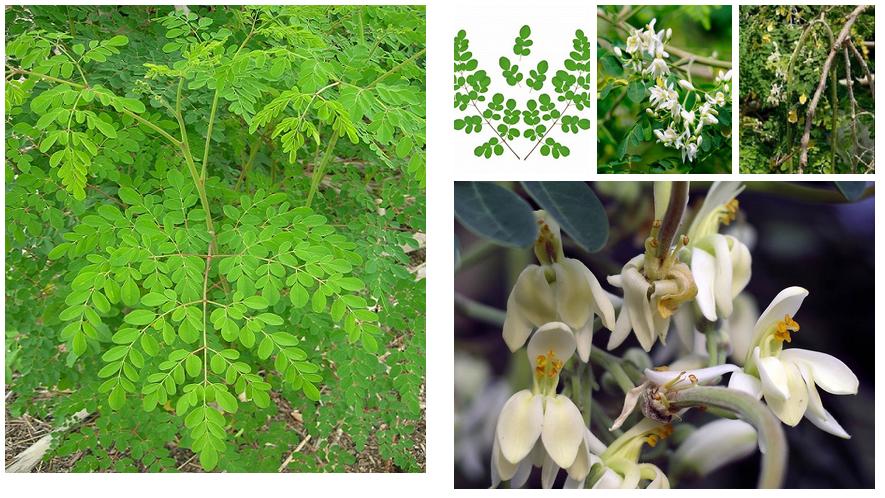
One cup of fresh, chopped leaves (21 grams) contains the following (2):
- Protein: 2 grams
- Vitamin B6: 19% of the RDA
- Vitamin C: 12% of the RDA
- Iron: 11% of the RDA
- Riboflavin (B2): 11% of the RDA
- Vitamin A (from beta-carotene): 9% of the RDA
- Magnesium: 8% of the RDA
- Fiber: 2% of daily requirement
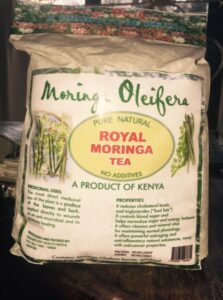
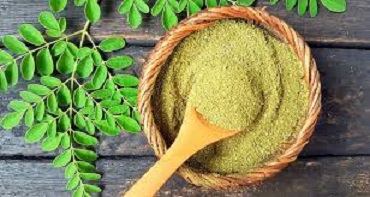
Uses of Royal Moringa Powder
As a health supplement, Royal Moringa Powder is used as a general booster of the immune system. Specifically it is used to treat arthritis and other joint pain (rheumatism);anaemia,asthma; cancer; constipation; diabetes; diarrhea; epilepsy;
stomach pain; stomach and intestinal ulcers; intestinal spasms; headache; heart problems; high blood pressure; kidney stones; fluid retention, swelling; thyroid disorders; and bacterial, fungal, viral, and parasitic infections, inflammation-related diseases.
This miracle supplement benefits the libido, being used to treat low sex drive. It might likewise work as a natural birth control compound, according to some studies, and to increase breast milk production.
How to consume Royal Moring Powder
Our Royal Moringa Powder is the most nutrient-dense type of moringa powder available in the market, organic and dried slowly under low temperatures, which helps preserve delicate compounds.
Here are the most common ways to use moringa to get the best benefits possible:
- Moringa powder can be added to smoothies, soups, and other foods for extra nutrition. Moringa powder has a distinctive “green” flavour (du to its chlorophyll contents), so you may want to start out slowly when adding it to your meals. Moringa powder can be used to make a potent antioxidant tea.
- Take Royal Moringa Powder preferably with a meal ,rather than on an empty stomach, either sprinkled on your food, or blended in a smoothie, mixed in the soup or broth, sauce, casserole, stew, etc. Avoid cooking or boiling the powder, so as to preserve its nutritional value in its entirety.
- Moringa tea: Moringa tea is made from dried leaves steeped in hot water, just like many other beneficial herbal teas.
- Recommended Dosage: There’s no recommended or required dosage of moringa at this time since it’s only an herbal supplement and not an essential nutrient. That being said, there’s some evidence that the optimum dose for humans has been calculated to be 29 milligrams per kilogram of body weight.
- It’s recommended that you start by taking half a teaspoon of dried moringa orally per day for three to five days, increasing your intake slowly over two weeks as you get used to its effects. Most people choose to take moringa every several days but not every single day for long duration of time, since it can cause laxative effects and an upset stomach when overused..
- Our “Royal Moringa oleifera comes in packets of 500 grams, 1 kg, 2 kgs and 4 kgs.
. Caution – Adverse Reactions
The plant is generally considered to be nontoxic as a supplement in the recommended normal dosages. Nevertheless, some research papers have reported the following adverse reactions:
1.Bradycardia (decreased heart rate) and hypotension due to the presence of alkaloids in moringa.
2.Some antifertility properties observed in moringa may cause impotency.
3.In animal studies evidence has been found that long-term administration of moringa leaves may cause hepatic as well as renal impairment.
4. During pregnancy or when breast-feeding, it’s best to avoid high doses of moringa supplement since not enough research has been done to show it’s definitely safe.
Use moringa under the care of a health care professional or functional doctor if pregnant or breast-feeding to air on the safe side.
NOTE:
The adverse effects pointed out above have been mostly found in animal studies or in a laboratory setting through in-vitro , in-vivo processes. More human trials are necessary to confirm similar effects in humans and to establish the accurate dosage required in supplementation.
Furthermore the above mentioned adverse effects occur mainly due to improper dosing. Accurate dosing is strongly recommended for human use to prevent adverse reactions.
If you have any problems with your blood pressure, heart, liver or kidney — or if you take any prescription medications – do not consume moringa until you talk with your doctor.
Because it’s completely natural and free from chemical additives our Royal Moringa Powder taken by mouth or used on the skin seems to be very well-tolerated and unlikely to cause side effects.
Moringa Leaves Powder RDA
| Nutrient | %RDA in 25g powder for children | %RDA in 50g powder for pregnant women |
| Protein | 42% | 21% |
| Calcium | 125% | 84% |
| Magnesium | 61% | 54% |
| Potassium | 41% | 22% |
| Iron | 71% | 94% |
| Vitamin A | 310% | 162% |
| Vitamin C | 22% | 9% |
For further information tune to:
REFERENCES
- http://www.cancertutor.com/moringa-oleifera/
- http://fitlife.tv/30-amazing-benefits-of-moringa-plant-for-skin-hair-and-health/
- http://authoritynutrition.com/6-benefits-of-moringa-oleifera/
- http ://miracletrees.org/moringa-network.html
- http://www.naturalnews.com/042435_Moringa_oleifera_health_benefits_herbal_medicine.html
- http://www.naturalnews.com/043310_Moringa_oleifera_anti-inflammatory_herbal_medicine.html
- http://www.naturalnews.com/046486_Moringa_diabetes_glutathione.html
- http://www.tfljournal.org/article.php/20051201124931586
- https://www.mskcc.org/cancer-care/integrative-medicine/herbs/moringa-oleifera
- https://en.wikipedia.org/wiki/Moringa_oleifera
- http://www.webmd.com/vitamins-supplements/ingredientmono-1242-moringa.aspx?activeingredientid=1242&activeingredientname=moringa
- http://www.sciencedirect.com/science/article/pii/S0378874199001063
- http://www.ncbi.nlm.nih.gov/pubmed/17089328
- http://www.ncbi.nlm.nih.gov/pubmed/21385597
- http://www.ncbi.nlm.nih.gov/pubmed/21992488
- http://www.ncbi.nlm.nih.gov/pubmed/12875626
- http://www.ncbi.nlm.nih.gov/pubmed/21780550
- http://www.researchmoringa.com/uploads/2eHealth_International_Blood_Sugar.pdf
- http://www.ncbi.nlm.nih.gov/pmc/articles/PMC2275769/
- http://www.sciencedirect.com/science/article/pii/S0378874109001925
- http://www.ncbi.nlm.nih.gov/pubmed/20661662
- http://www.ncbi.nlm.nih.gov/pubmed/20045461
- http://www.ncbi.nlm.nih.gov/pubmed/22197459
- http://www.ncbi.nlm.nih.gov/pubmed/16386862
- http://www.ncbi.nlm.nih.gov/pubmed/22216055
- http://www.ncbi.nlm.nih.gov/pubmed/20637582
- http://www.ncbi.nlm.nih.gov/pubmed/22849565
- http://researchmoringa.com/uploads/13Ulcers.pdf
- http://www.scientific-journals.co.uk/web_documents/1020205_moringa_oleifera.pdf
- http://www.ncbi.nlm.nih.gov/pubmed/22559734
- http://www.ncbi.nlm.nih.gov/pubmed/22465510
- http://www.ncbi.nlm.nih.gov/pubmed/19904611
- http://www.ncbi.nlm.nih.gov/pubmed/22294387
- http://www.scielo.br/pdf/rimtsp/v52n3/a03v52n3.pdf
- http://www.tentree.com/blog/wp-content/uploads/2014/06/59065866.png
- http://www.cancer.net/navigating-cancer-care/prevention-and-healthy-living/chemoprevention
- http://www.cryst.bbk.ac.uk/education/AminoAcid/the_twenty.html
- http://icmr.nic.in/ijmr/2008/december/1212.pdf?q=monoamines.
- https://www.medicalnewstoday.com/articles/319916.php
- https://www.webmd.com/vitamins/ai/ingredientmono-1242/moringa
- https://www.healthline.com/nutrition/6-benefits-of-moringa-oleifera#section1
- https://www.emedicinehealth.com/moringa/vitamins-supplements.htm
- https://www.mindbodygreen.com/0-22401/10-powerful-benefits-of-drinking- moringa-every-day.html
- https://onlinelibrary.wiley.com/doi/full/10.1002/fsn3.1057
- https://www.organicfacts.net/health-benefits/vegetable/moringa.html
- https://www.sciencedirect.com/science/article/pii/S2213453016300362
- https://www.verywellhealth.com/the-uses-and-benefits-of-moringa-4149435
- http://www.ergogenicsnutrition.com/blog/10-powerful-benefits-of-moringa/
- https://en.wikipedia.org/wiki/Moringa_oleifera
- https://www.infonet-biovision.org/EnvironmentalHealth/Trees/Moringa-Moringa-oleifera
- https://www.sciencedirect.com/topics/agricultural-and-biological-sciences/moringa-oleifera
- https://www.researchgate.net/publication/6708493_Moringa_oleifera_A_food_plant_with_multiple_medicinal_uses
- https://avrdc.org/moringa-moringa-oleifera/https://avrdc.org/moringa-moringa-oleifera/
- https://aduna.com/blogs/learn/moringa-oleifera-the-moringa-tree
- https://examine.com/supplements/moringa-oleifera/
- https://www.ncbi.nlm.nih.gov/pubmed/25374169
- https://miracletrees.org/
Note: The material contained in this website is for information purposes only. It is not intended as a substitute for professional advice of any kind nor does it recommend any particular nutritional or treatment option for any medical health condition. By providing the information contained herein we are not diagnosing, treating, curing, mitigating, or preventing any type of disease or medical condition. Before beginning a treatment regimen of any type, it is advisable to seek the advice of a licensed medical practitioner.
————————————————————————————————–
